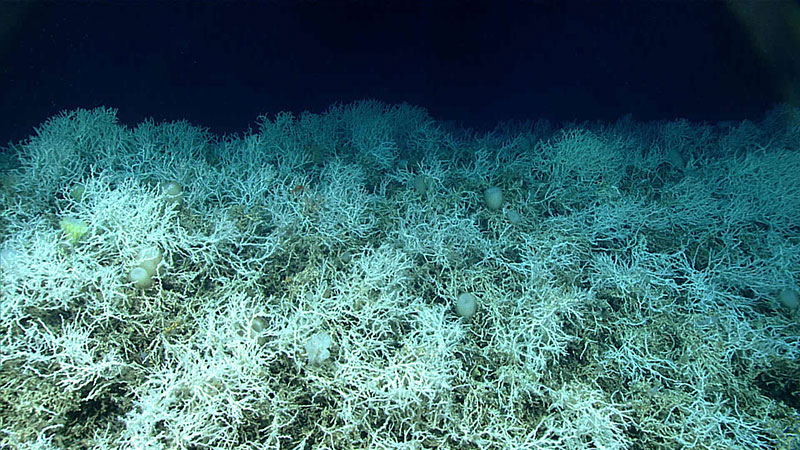Do all corals live in warm water?
Not all corals live in warm water – in fact, over half of all known coral species are found in cold, deep, and dark waters.

Dense fields of Lophelia pertusa, a common deep-sea reef-building coral, found on the Blake Plateau knolls. The white coloring is healthy – deep-sea corals don’t rely on symbiotic algae, so they can’t bleach. Image courtesy of the NOAA Office of Ocean Exploration and Research, Windows to the Deep 2019. Download image (jpg, 72 KB).
When most people think about corals, they usually imagine a sunny tropical reef speckled with fishes, crabs, snails, and other creatures on a colorful rocky outcrop. However, not all corals are found on island coasts in shallow seas. In fact, over half of all known coral species are found in deep, dark waters where temperatures range from 4-12°C (39-54°F). For this reason, we call these corals the “cold-water” or “deepwater” corals. They are found all over the world.
Cold-water corals are part of the taxonomic group called Cnidaria, and they are related to animals like sea anemones and jellyfish. They can live as individuals or as colonies that form extensive reefs. These corals feed by waiting for small food particles to flow past, and then use their stinging cells to capture them. They also provide habitat for other species. These beautiful animals are among the oldest living organisms; some reefs are several thousand years old, and some individual corals live several hundred years.
While we have known about cold-water corals for hundreds of years, overall, they have been poorly studied. Usually existing in a world of darkness, these corals lack the symbiotic algae that populate (and help color) the shallow corals. However, increasing knowledge and evidence shows that cold-water corals are important as fish habitat, hold records on ocean climate and productivity, and are hotspots of biodiversity, including for new species.